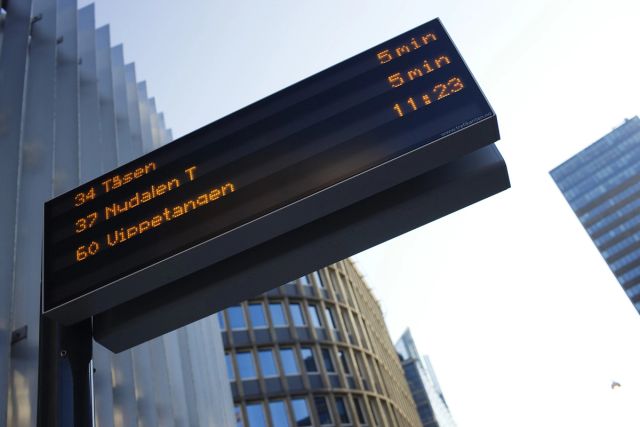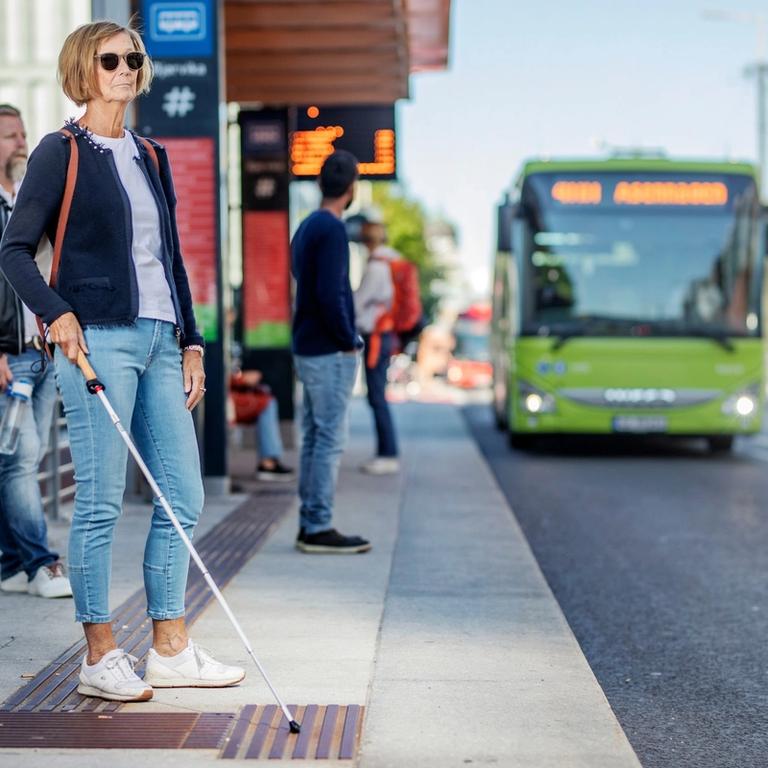All the real-time information displays are being replaced
Published 11.07.2025

Everyone who uses public transport pays attention to the real-time information displays. When you're waiting for the bus, it's more tempting to glance at a lit-up board than to delve into the timetable. For over 20 years, these signs have served passengers. Now they are to be replaced with new signs that provide faster and better information.
Time for replacement
The old real-time information displays are based on the technology of the 2G network. Now that the 2G network is being phased out, it means that 400 displays need to be replaced. The project is already well underway.
– The system and technology are do for an upgrade, says Dag Solhaug, project manager for the display project at Ruter. The Planning and Infrastructure department is responsible for the project.
The displays consist of a monitor, beam, and information pillar. The monitors began rolling out at Nationaltheatret on June 17th, the beams will follow in August, and the information pillars will come later. All 400 displays are expected to be in place by the end of the year.
More modern and faster updates
A significant benefit for passengers is that the new displays can show information in completely different ways compared to before. The new screens allow for design and variation in layout, colors, icons, images, and even video. This provides far more options for how departure times, service disruption information, and campaigns are displayed.
The new screens will vary in size and dimensions depending on the space available at each stop. This means that the design of the display will vary somewhat from place to place.
Easier to read for everyone
– For people with visual impairments who use screen reader apps on their mobile phones, it will now be easier to read the displays. The new screens do not flicker in the same way as today's LED screens do through the mobile camera. This makes it easier for screen readers to interpret the text, says IT developer at Tet Digital, Thorvald Ness.
The new signs will also be updated much faster. The old real-time system receives data with a significant delay, sometimes up to two minutes, while the new screens receive information much more quickly.
Everyone who travels by public transport can, in other words, look forward to an improved travel experience throughout the autumn and from 2026.
